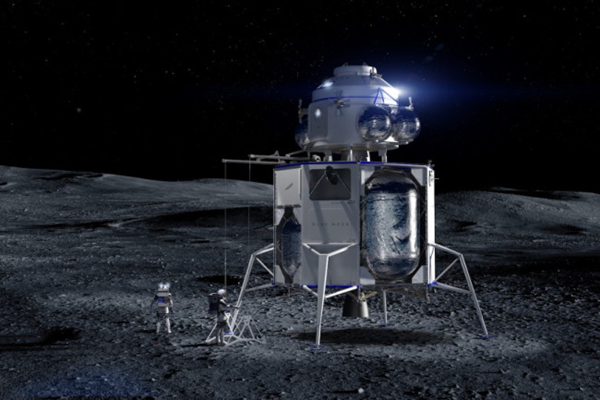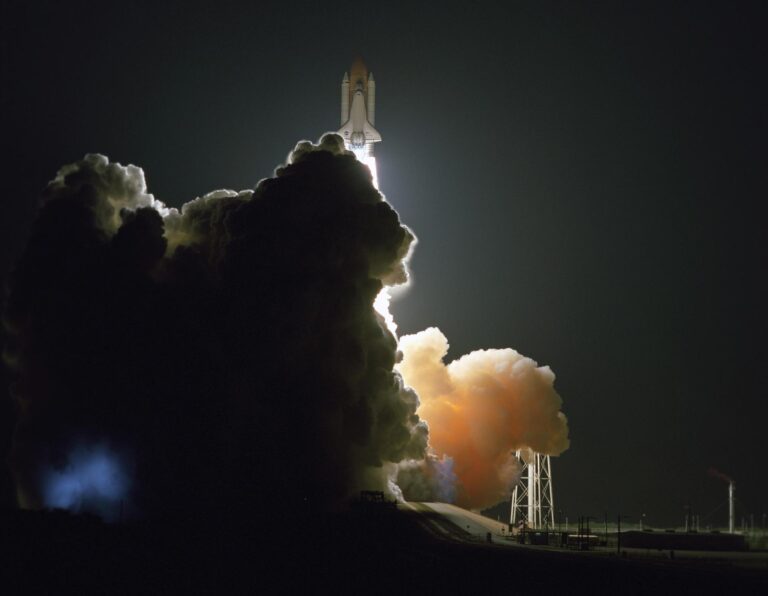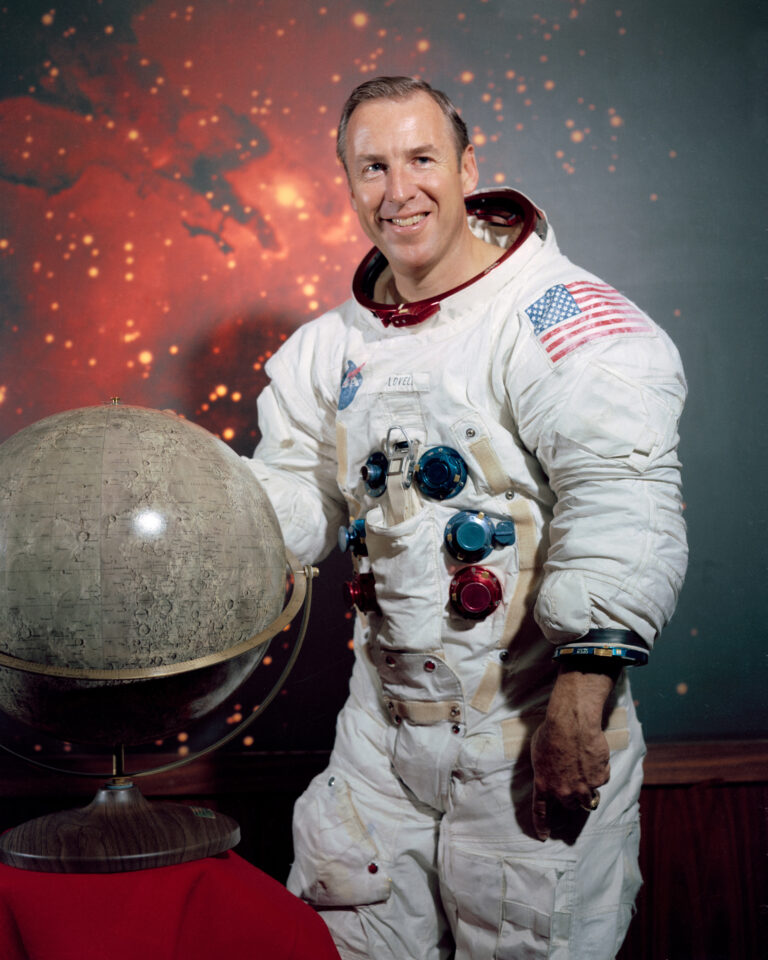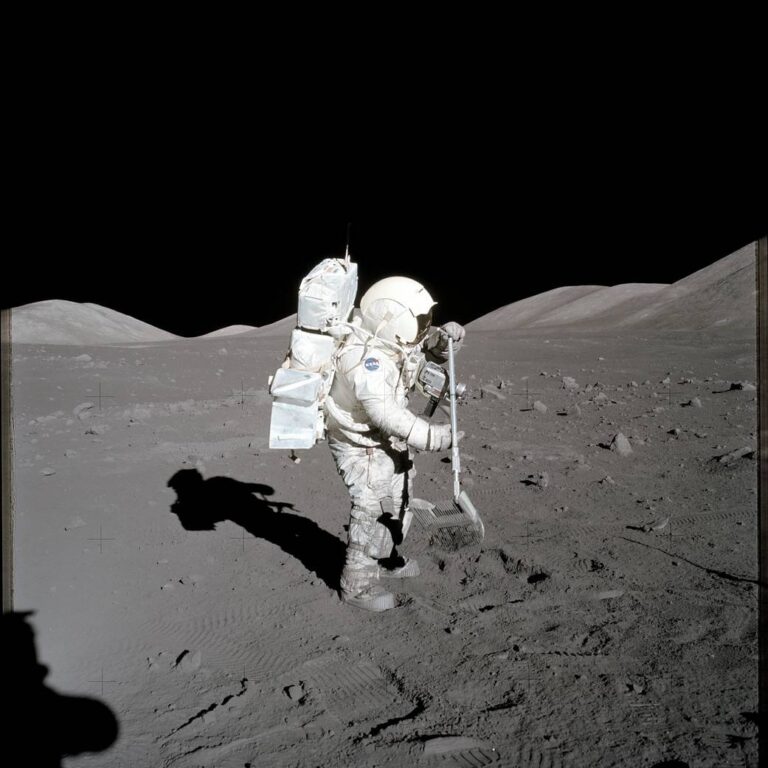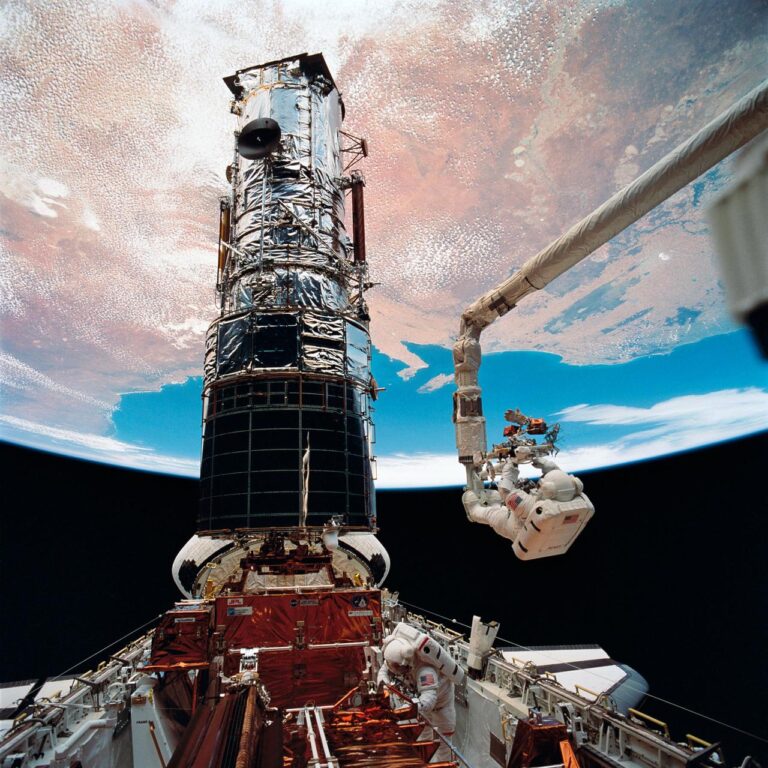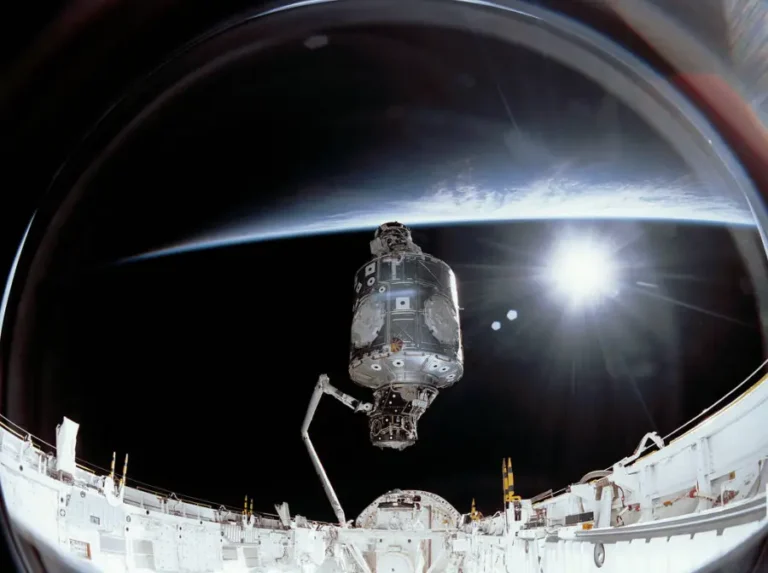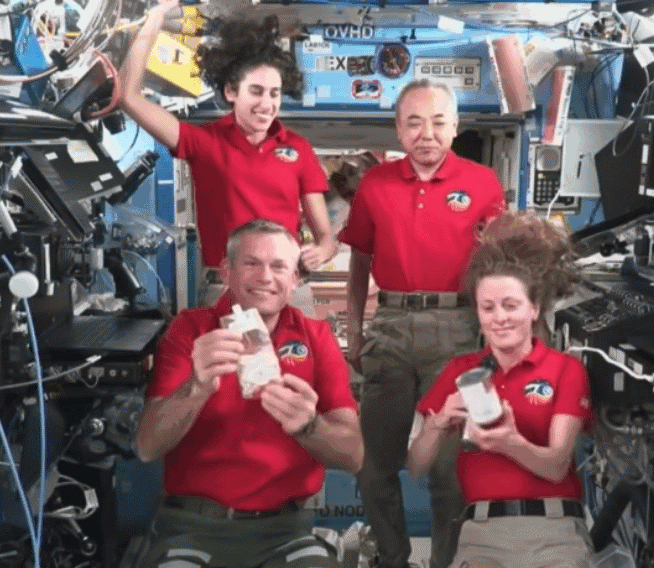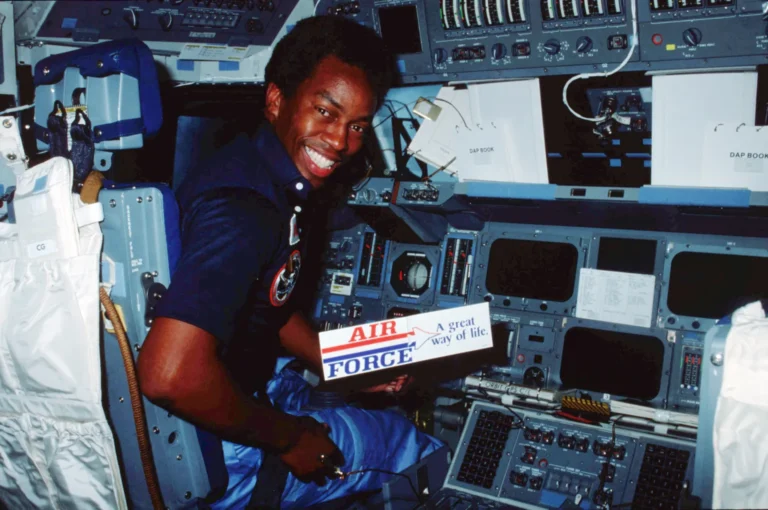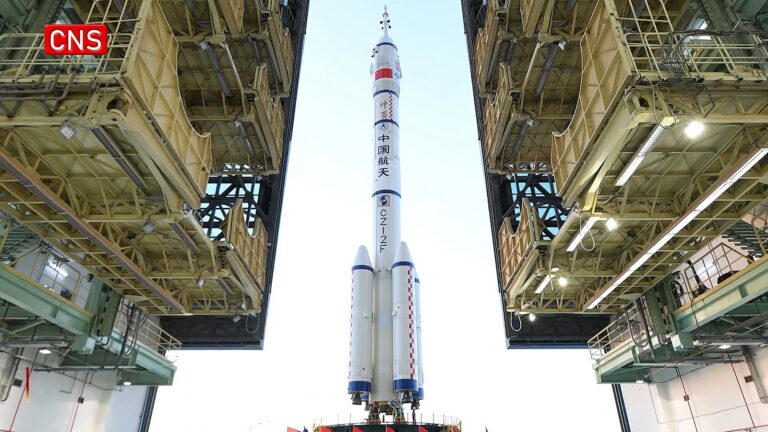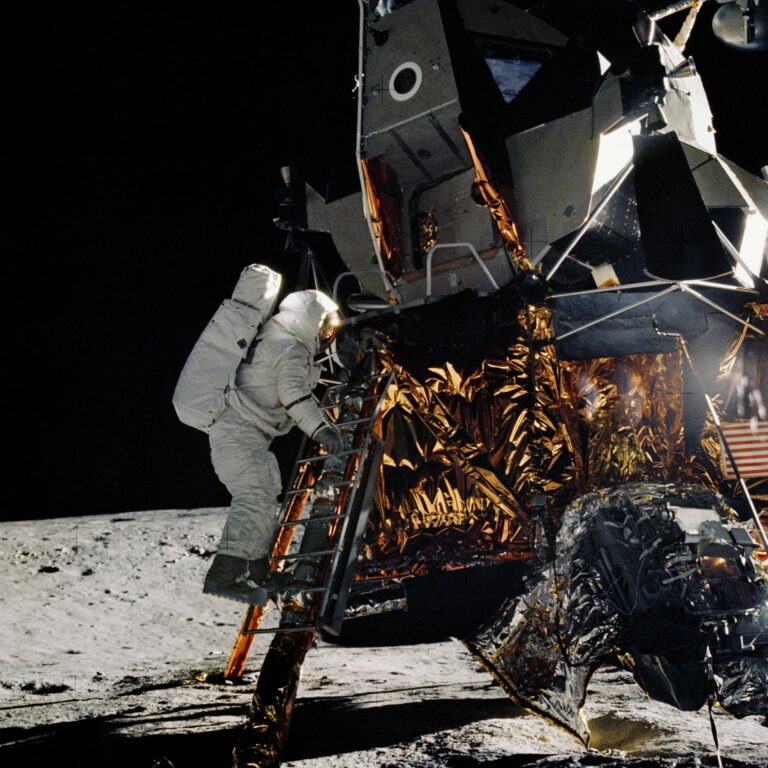Key Takeaways:
The Blue Moon spacecraft is a lunar lander designed to haul cargo, and potentially people, to the lunar surface on future missions. It’s currently being developed by Amazon founder Jeff Bezos’ rocket company, Blue Origin. Once completed, Blue Moon should be capable of delivering nearly 10,000 pounds (4,500 kilograms) to the Moon. By comparison, NASA’s Apollo lunar module, the “LM,” was designed to haul up to 11,000 pounds (5,000 kg).
Blue Moon’s impressive cargo capacity, coupled with modern technology, could enable the stuff of sci-fi dreams. Not only could the spacecraft haul the freight needed to build lunar bases or telescopes on the Moon, it also might safely land many batches of astronauts on the lunar surface.
“What we’re trying to do is enable a future in which people can live and work on the Moon as part of a broader vision of millions of people living and working in space someday,” Blue Origin’s Chief Scientist Steve Squyres said in an interview with Astronomy last year.
What is the Human Landing System?
Blue Origin — together with its partners Lockheed Martin, Northrop Grumman and Draper — won a collective $579 million contract in 2020 to build a “Human Landing System” for NASA’s Artemis program. Although engineers had been working on the lunar lander since 2016, it wasn’t revealed to the public until 2019. And this latest contract is significantly accelerating its development.
“This is the first time since the Apollo era that NASA has direct funding for a human landing system, and now we have companies on contract to do the work for the Artemis program,” former NASA Administrator Jim Bridenstine said when the award was announced.
However, Blue Origin’s funding was only enough for an initial “base period” study that’s set to expire at the end of April 2021. Plus, the company and its partners are still competing for the final lunar lander contract. The competition is stiff, too, with Blue Origin facing off against both SpaceX and Dynetics, the latter a spaceflight company in Alabama. Still, so far, SpaceX’s and Dynetics’ projects have won comparatively less money than Blue Origin’s effort.
With the base period funding for the development of a working lunar landing expiring soon, only two of the three projects will make it to the next round. And NASA is expected to award the contracts to the two finalists very soon, according to reporting by SpaceNews.
If Blue Moon gets the green light, it won’t just be a win for Blue Origin, it will also be a major milestone for their partners. That’s because Blue Moon can’t actually reach the lunar surface without several additional spacecraft components built by other contractors.
Once it’s all put together, the multi-company team calls their Human Landing System spacecraft the Integrated Lander Vehicle (ILV), which will include elements for lunar transfer, as well as both descent and ascent.
Blue Origin will create the so-called descent element of the ILV spacecraft. That’s Blue Moon itself — the lander that will actually touch down on the lunar surface.
Northrop Grumman is responsible for the transfer element of the ILV. This is a separate spacecraft that will rendezvous with Blue Moon in lunar orbit to put the lander on course for the Moon’s surface.
Lockheed is designing the ILV’s ascent component. The ascent vehicle will mate with the other two craft so they can all land together as one cohesive unit. The ascent component will sit on top of the others, letting astronauts fly off the lunar surface and reunite with an orbiting spacecraft.
Finally, Draper Labs will provide flight avionics to guide the descent vehicle and more. Each of the four companies is responsible for designing and building its own components. But Blue Origin will handle uniting these various aspects into one cohesive landing system built to put boots back on the Moon and return them safely to orbit.
Around the Moon, the ILV could also dock with NASA’s Orion capsule, or even with the Lunar Gateway, a planned lunar-orbiting space station. The spacecraft could launch aboard a United Launch Alliance Vulcan Centaur rocket, or it could hitch a ride on Blue Origin’s New Glenn — though both of these heavy-lift launch vehicles are still under development.
Landing Artemis on the Moon
The ILV, however, won’t actually carry astronauts all the way from Earth to the Moon. Instead, the idea is that astronauts would travel to the Moon on NASA’s Orion spacecraft, where they’d either rendezvous with the Lunar Gateway, or jump directly into the ILV.
From there, Blue Moon would ferry the Artemis program astronauts to the lunar surface and back. That stands in contrast to SpaceX’s Starship HLS — Blue Moon’s competition — which would actually be able to launch astronauts from Earth and take them all the way to the Moon.
Despite the very real threat of losing out to SpaceX, the National Team’s value proposition to NASA is that Blue Origin and its partners have decades of experience in human spaceflight, rockets, propulsion, interplanetary navigation and landing, as well as deep-space missions.
“Together, these partners guided Apollo, established routine orbit cargo transfer, developed today’s only crewed lunar spaceship, and pioneered planetary precision landing with liquid hydrogen/liquid oxygen vehicles,” the team said in press materials.
If successful, Blue Moon and the larger Integrated Lander Vehicle would enable crewed missions to the lunar surface that last much longer than anything seen during the Apollo era. Blue Moon’s cargo-carrying capacity also makes it like a reusable freight train to the Moon’s surface. Yet, before the craft can prove its worth, Blue Origin and the rest of the National Team will need a significant boost in NASA funding to break out of developmental limbo.
“We were given a gift, this nearby body called the Moon,” Bezos said in his initial Blue Moon reveal speech. “It’s this generation’s job to build that road to space, so that the future generations can unleash their creativity.”

